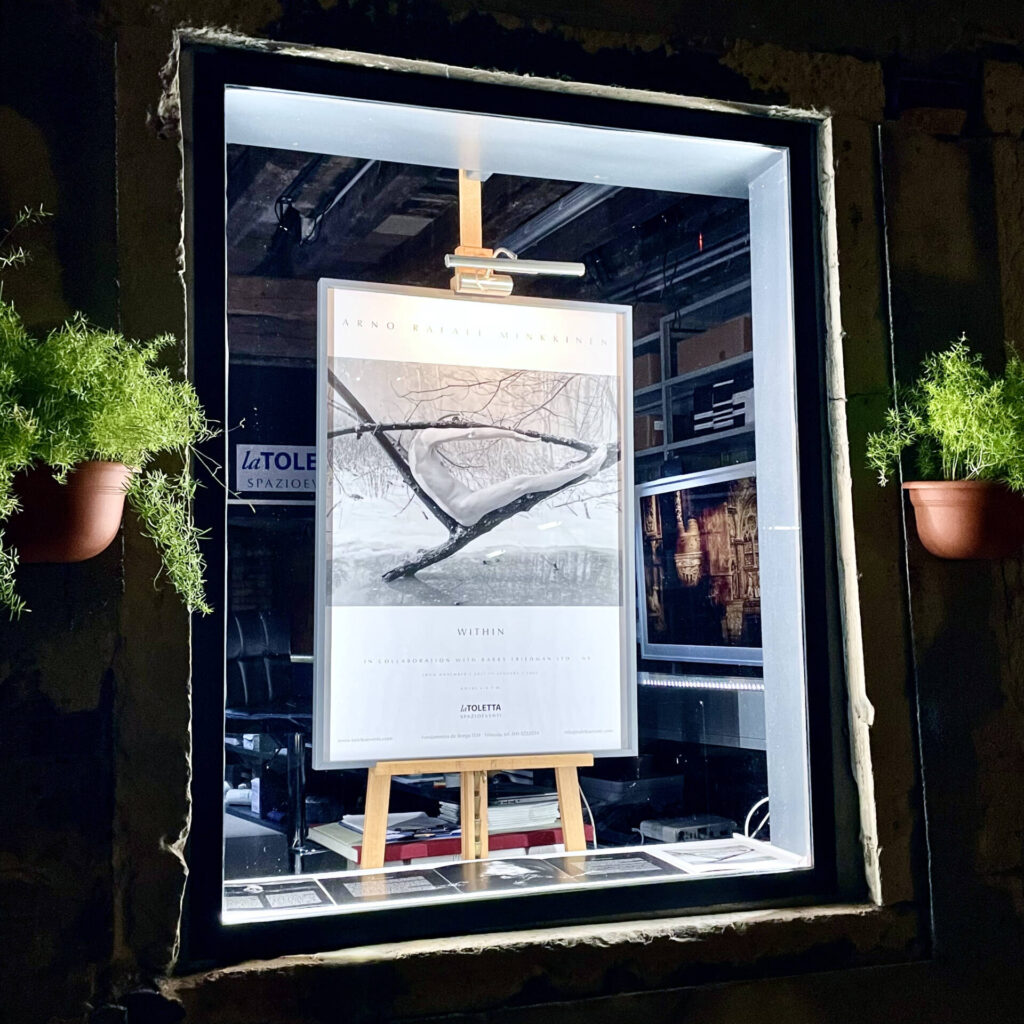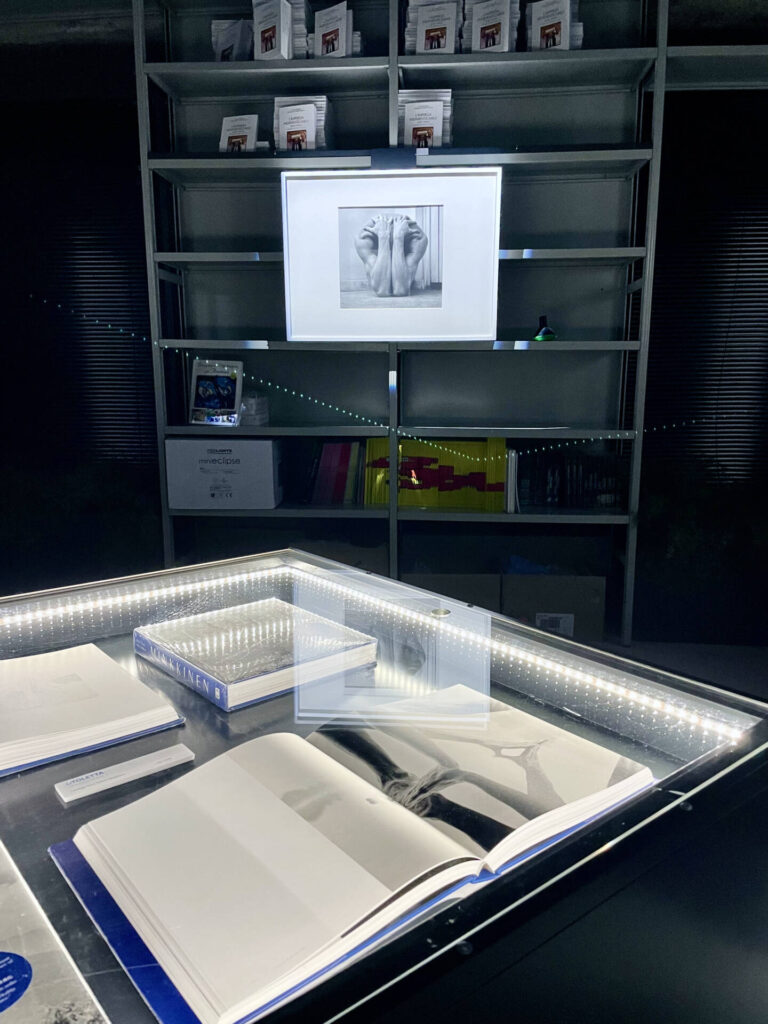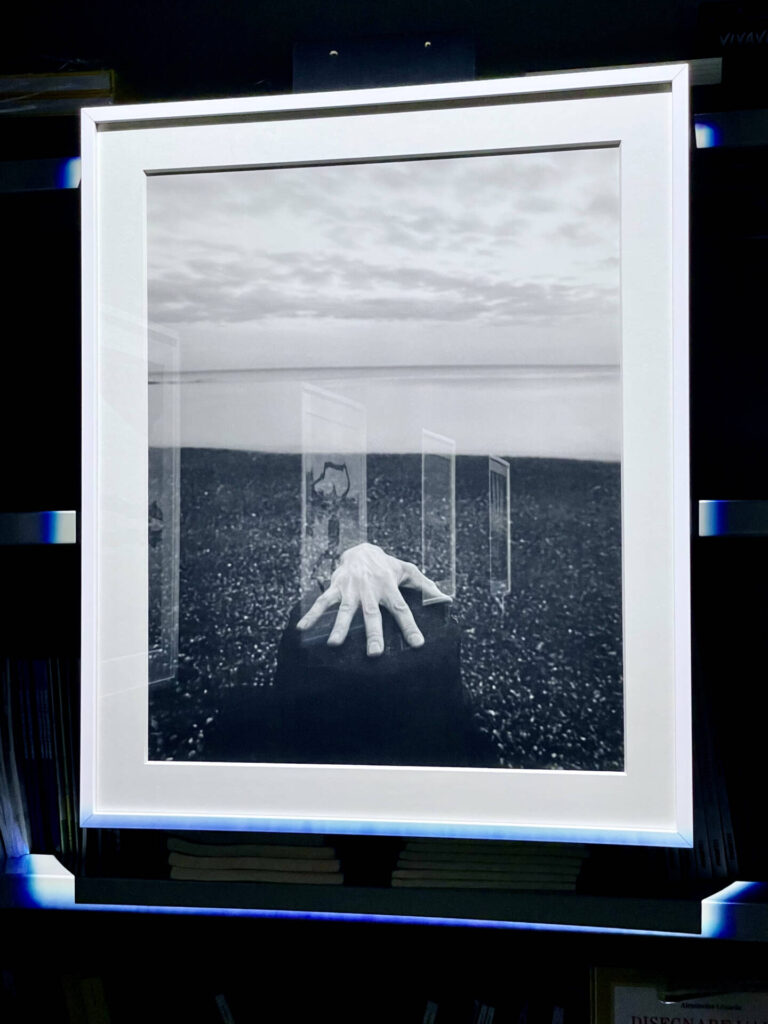A conversation with the artist Gianfranco Tonin, the award-winning artist of the ‘Most Publicly Voted Work’ section at the “International Prize for Contemporary Art Visioni Altre” 2022-2023 in Venice

You call yourself a self-taught artist, what did it mean to you? And how did your artistic vocation come about?
My youthful impetuosity, and my lack of inclination for discipline, clashed with school rigidity and this meant that I left the State Art Institute I was attending after three years. I must confess, to tell the truth, that I was not particularly interested in studying classical art, as I was fascinated by contemporary art, especially the Dada movement and Pop Art. I therefore did not have a school curriculum but embarked on an artistic path independently, I cannot say whether I gained or lost, what I do know is that I started painting looking for a technique closer to me to express what I was living. I felt free, unconsciously free.
Tell us about your black and white period. You describe it as ‘the technical synthesis” of a creative and poetic…
In those years (end of the 70s of the last century ) I wished to ‘live on Art’, searching for specific meanings, looking through the mirror at reality, provocation, love, emotions and fears. For a few years I tried and mixed different techniques and materials, moving from canvas to cardboard and from oil temperas to synthetic paints. I was looking for an essentiality -in technique and in chromatic choice- for emphasising imagination and poetry. So I so I got to black and white, two essential colors, neutral and opposing tones as synonyms of right and wrong, good and bad, beautiful and ugly, shadow and light.
I therefore abandoned the colour to use only pencil and white cardboard (as a reference I had the photographer Helmut Newton).I was inspired by portraits or human figures to rework and recontextualise them, creating other images in a photographic figurative realism, with non-conformist connotations. The provocation, well emphasised by the black and white, was direct and sharp but with time also included the whole grey scale, in an “Aesthetic Divertissement” (An example from 1984 is ‘If the net breaks’ depicting two women kissing behind a torn net right at the level of their mouths. Exhibited at the 68th collective exhibition of the Bevilacqua Foundation in Venice).
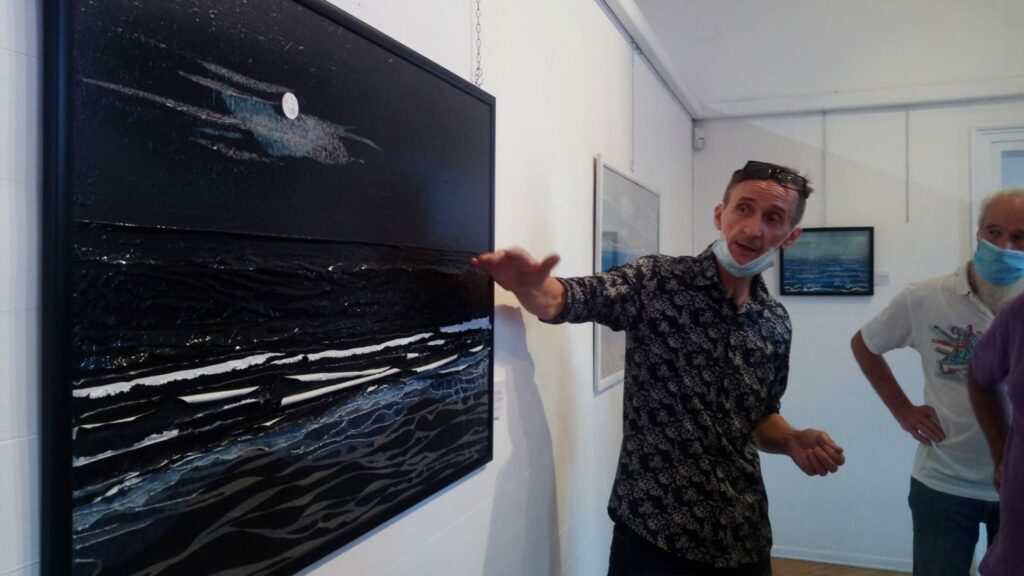
Why, at some time, choose to leave traditional techniques behind to approach other materials?
If you are referring to oil painting and canvas, I can safely say that I left them many years ago, because I was looking for other techniques to express myself. After the synthesis of black and white, which I worked with for about fifteen years, I started to collect what was around me, everyday materials to return to experiment. It was then that I returned to using colour. I painted on glass, with synthetic paints starting from a detail (e.g. a reflection of light) to the background; I engraved wooden panels with a metal point, overlapping several layers of different coloured paint. The feature that linked this type of work, becoming the common thread, was always the human figure, for me the focal symbol of the universe.
At the end of the 1990s, I did a series of works with coloured pastels, where strokes and lines made with very fast movements on a white background, created panoramas with an undefined horizon point. Without presumption today I can declare that I’ve never stopped looking for new ways or other materials, such as different types of plastic material (silicone), cellophane, nylon bags, tar or cement powders. A continuous personal research/experimentation to relate to the observer also through play and and his reaction.
In recent years, you have been devoting yourself to the subject of the environment and the consequences that certain human behaviours cause to nature. Forgive us the provocation: in our time, when everyone ‘chatters’ about environmental protection, do you think that art can really make people think and invite change?
I don’t know if art can inspire change, but it is certain that art can make people think and make them more sensitive to a possible relationship with the environment. Since 2017 I have been using plastic in the creation of works depicting the sea and its living organisms, in a path from figurative representation to informal work, yet concealing a hyperrealist vision because, as it happens, this is exactly what we can find in reality. Playing with paradox, these works convey a clear message of denunciation. Denunciation that cannot be ignored and which I also had the pleasure of finding in Pope Francis’ encyclical letter ‘Laudato si’, which I recommend reading. The greed of a profit-driven society is driving human beings in pursuit of a well-being that is no longer sustainable. The planet is experiencing ecological and social degradation that is putting us at risk of future extinction.
A thought of my own: perhaps we are manifesting the true human nature, no longer survival instinct but an unconscious will to self-destruct.
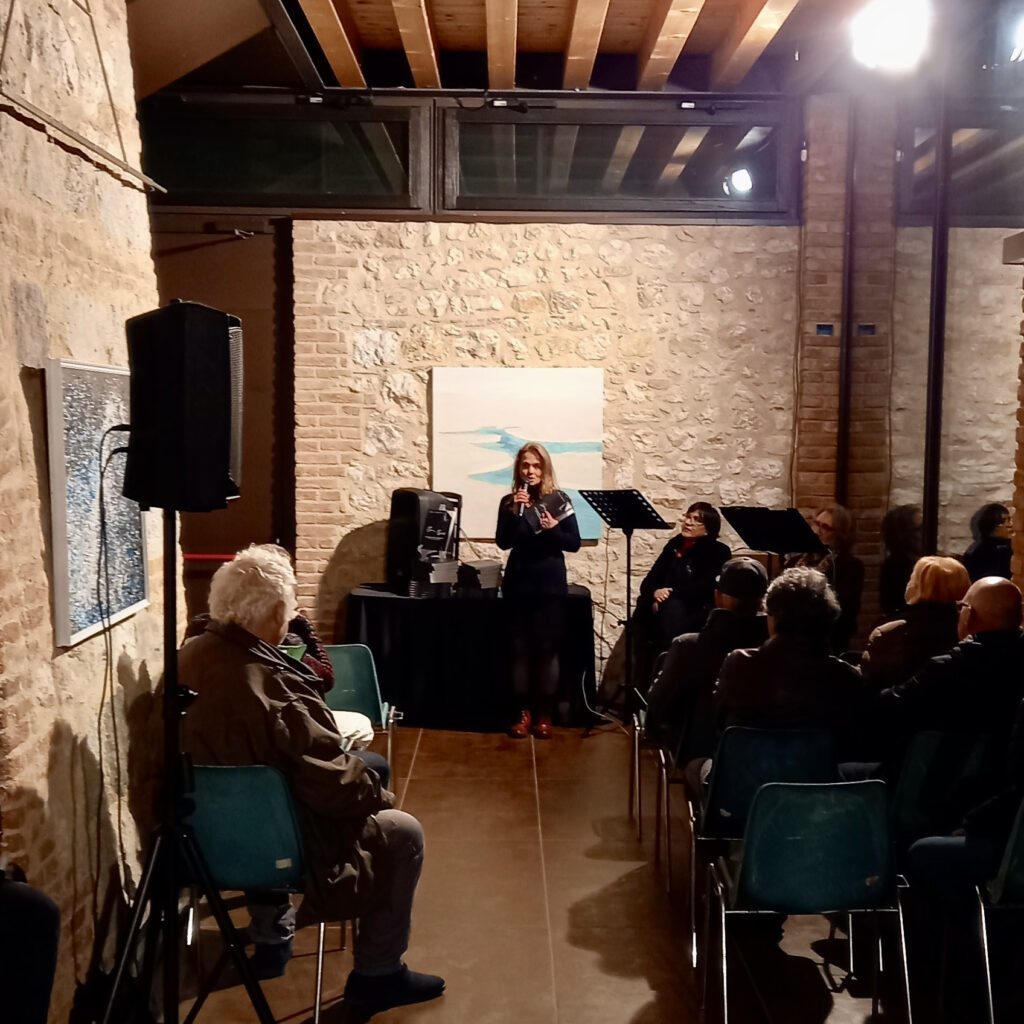
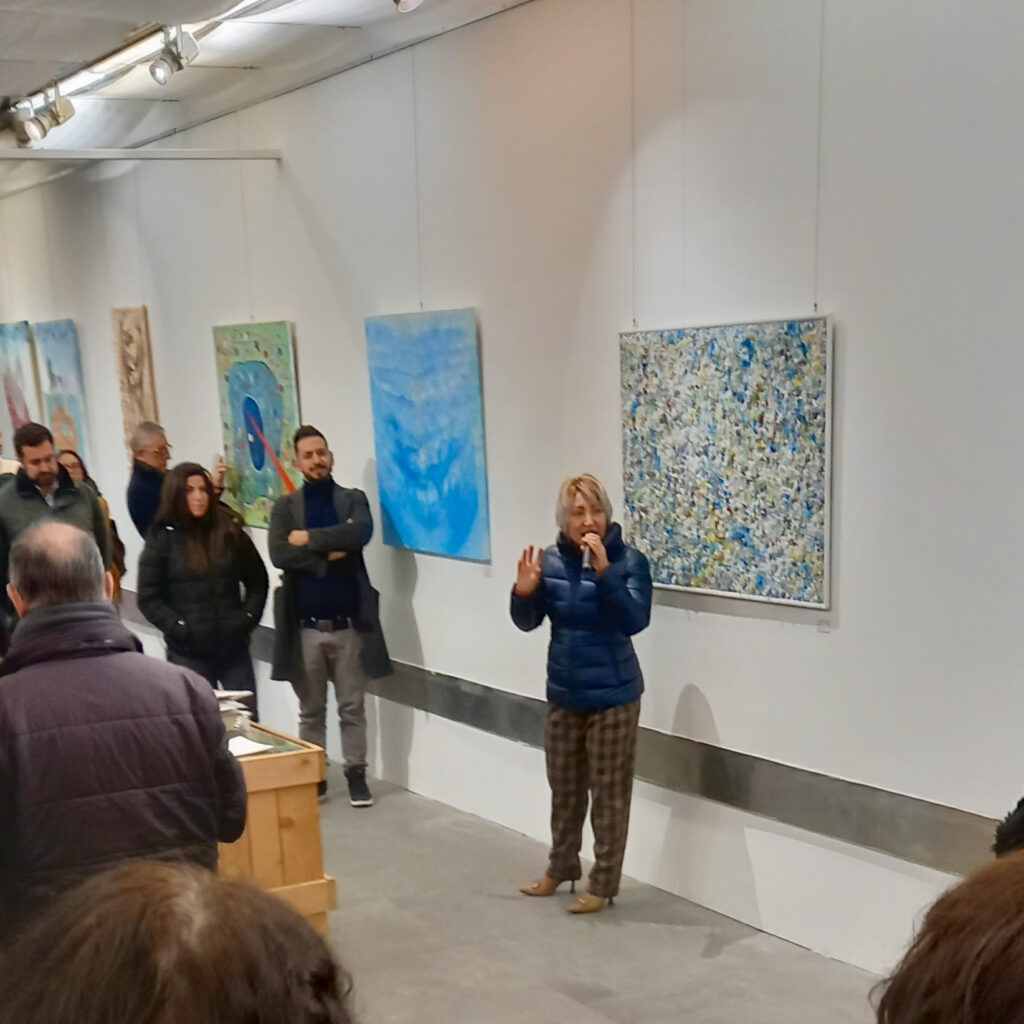
Is it still time for art to deal with social issues?
Of course…..! Art has always stood as a universal language, a representation of the divine, of harmony and beauty. But also as a denunciation of evils and injustices representing the society in which it develops, often anticipating and culturally stimulating a new way of seeing or feeling or a future change. From Giotto’s Expulsion of the Merchants from the Temple to Raphael’s School of Athens to point out the values of the good, the true and the beautiful, from Goya’s “Shooting on 3 May 1808”, which denounced for the first time the horrors of war, to Picasso, to the DADA movement, moving from ‘art for art’s sake’ to Banksy, one of the world’s best-known streetartists who has been able to spread messages of social denunciation in a satirical key. Art is communication, introspective or explicit. Art speaks, or rather shouts.
At the end of 2022, you decided to participate in a Contemporary Art Prize in Venice and, having reached the finals, your work was the most acclaimed by the public. We think it was a rewarding satisfaction, tell us how it made you feel and in your opinion, what is the added value that allowed your work to be so appreciated (remembering that it won out of 78 works on display!)
I am very pleased and grateful for the recognition I received from the Contemporary Art Prize, the emotion was great also because it was unexpected. As for the added value that enabled this recognition…I suppose it was the apparent simplicity of the image, a horizon line suggesting calm, stillness and therefore great tranquillity bathed in a breathtaking light (what we probably need today).
I don’t know, that’s my idea but who knows how many other interpretations have been given on the subject. Maybe someone in that strip of horizon heard a scream? Who knows!
In ‘Arctic Landscape’ (the award-winning work), nature as a whole decodes the human soul and its facets. How does your stylistic choice of harmony and authenticity fit in with an often violent and contradictory reality?
We need harmony and light and in ‘Arctic Landscape’ we can find it.
We can feel the elements linking in a vision opening up to a geometry, seemingly regular but questioning us, offering a deliberately broader perspective of observation. A subtle suggestion of action-non-action, because when nature is compromised by human action, the universal balance is broken and reality needs to recompose this fracture, repairing the precious sacredness of creation.
Is there (or has there been) a contemporary author who influenced or enhanced your artistic career? A painter, a scholar or a musician…?
I cannot say that there is/was a particular author…I admire several artists, that in various ways and at different times, I have felt closest to me and to my new desire for expression. As you may have guessed, I am constantly researching, and always open to the desire to let myself be contaminated, re-presenting in my own way what I feel, what I experience and what I want to communicate.
A goal (or dream still unrealised) for the future?
The purpose is not to stop working with art and to continue searching for a personal technique and style with which to communicate. As I have already said, for me art can only be expression of emotion and/or food for thought, through various stylistic forms including simplicity, play, provocation, paradox.
The dream is to realise the many ideas in my mind and to disseminate them as widely as possible.
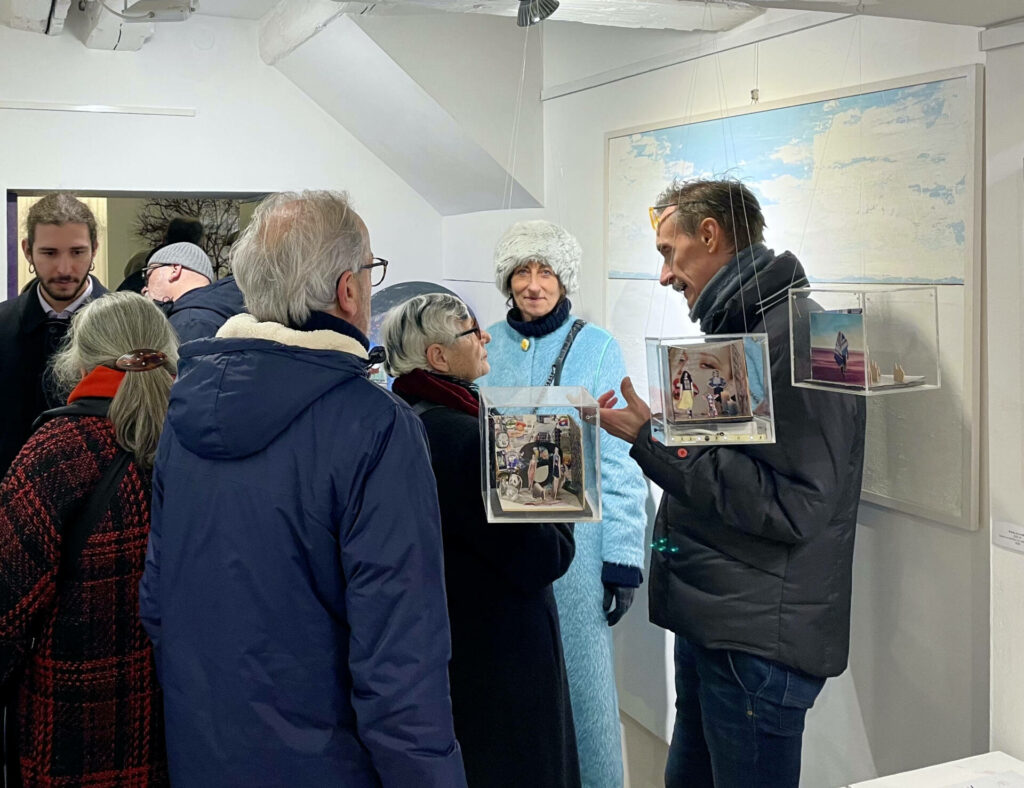

The work was on display throughout February 2023 at Visioni Altre Gallery Campo del Ghetto Novo, 2918 in Venice (Sestiere Cannaregio).
Press office: press.gart@gmail.com
